Pine Mountain Settlement School
Series 09: Staff/Personnel
Series 03: Histories
Series 10: Built Environment
Series 14: Education
RECORD PMSS 07 Industrial and Vocational 1913-1928
Evelyn K.Wells’ Record of industrial and vocational activity at Pine Mountain Settlement School from 1913 until 1928.
TAGS: Evelyn K. Wells ; Pine Mountain Settlement School ; industrial education ; vocational education ; settlement schools ; histories ; 1913-1928 ; Elizabeth C. Hench ; William Creech ; Ethel de Long Zande ; Katherine Pettit ; Mary Rockwell Hook ; Turner Turner ; Luigi Zande ; Andy Dorsky ; Oscar Begley ; Chris Anderson ; WWI ; Great Depression ; stonework ; masonry ; craftsmanship ; Italians ; Laurel House I ; Chapel ; Barn ; Reservoir ; farm ; farming ; Mary Sinclair Burkham School House ;
INDUSTRIAL AND VOCATIONAL
The industrial and vocational history of the School is summed up in the fact that the children have done all the work. One needs only to amplify and illuminate this statement, to show our ideals and accomplishments, in this phase of the School’s life.
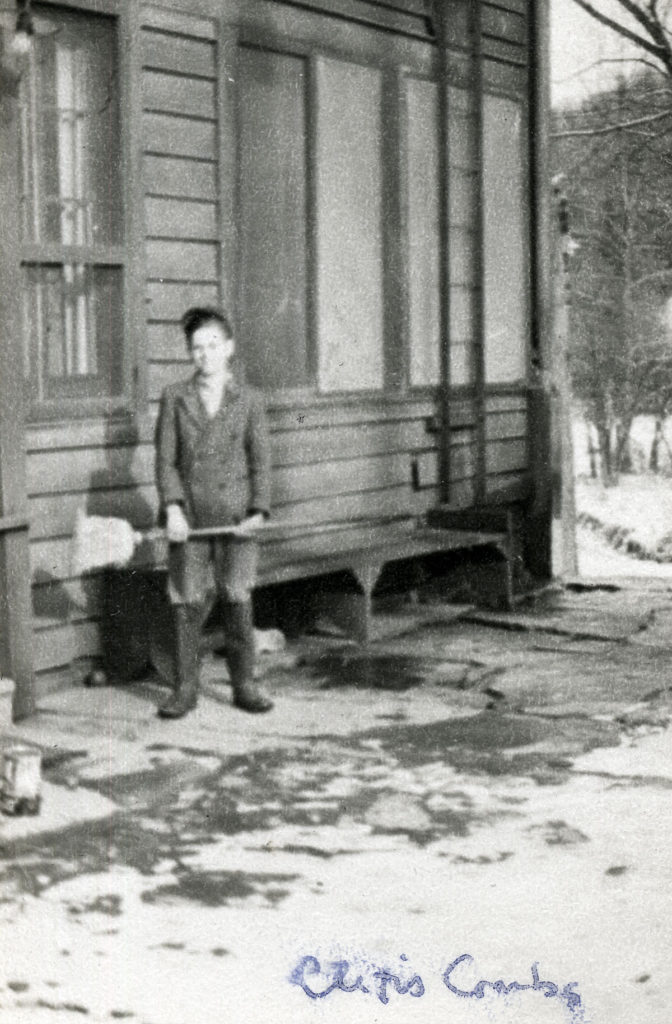
Curtis (?) Combs. cobb_alice_059
At various times we have had a paid team driver and and laundry girls , and we have during crop seasons or at housecleaning time, had neighborhood help, but aside from this, ever bit of work that has kept Pine Mountain life orderly and clean, as well as happy and beautiful, has come from the hands of the School children, working under the direction and often with the actual manual help of the workers. thus the children’s work has not only kept the school going, but it has helped them pay their way through school, the cash payment they made, applying on their tuition.
As one looks hen back on this fifteen years, the amount of routine work which the children have accomplished is little less than stupendous. The fires that have been mended, the meals that have been served promptly, hot, adequate and balanced, the floors that have been scrubbed, the cows that have been milked, the garden truck that has been raise have saved the school thousands of dollars have promoted a spirit of helpfulness and pride in the School on the part of the children, and have enabled them to stay here with little cost to themselves, and infinite educational profit. Aside from all the routine labor, there has been the constructive work in which they have helped, Mrs. Hanson, a worker here in the winter of 1919-1920, recalls working for weeks in one field with a gang of small boys, piling the stones into cairns that were afterwards used for road building, till she said she would never be able to look at a stone anywhere without stopping and picking it up and putting it in a pile!
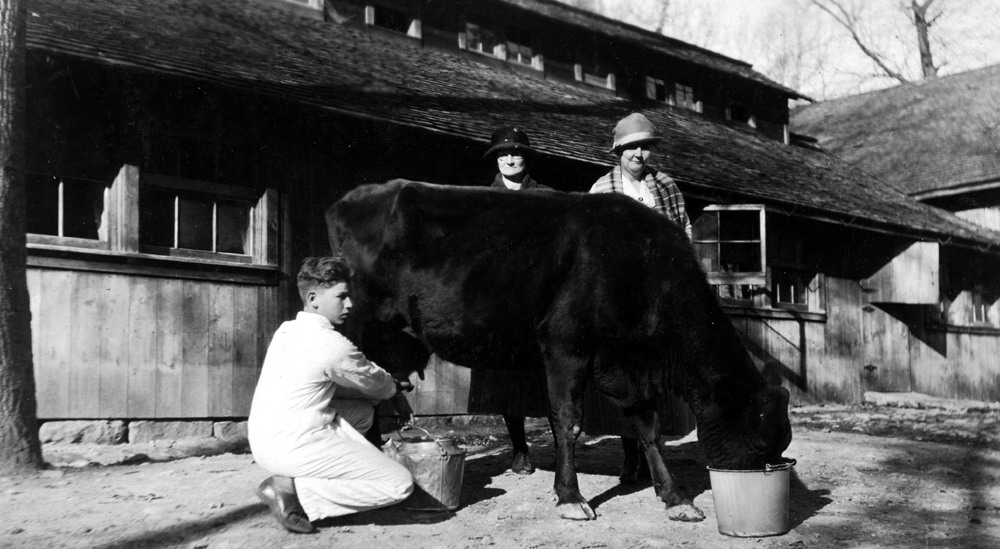
Barn. Dairy crew with woman in charge of dairy. [II_7_barn_282.jpg]
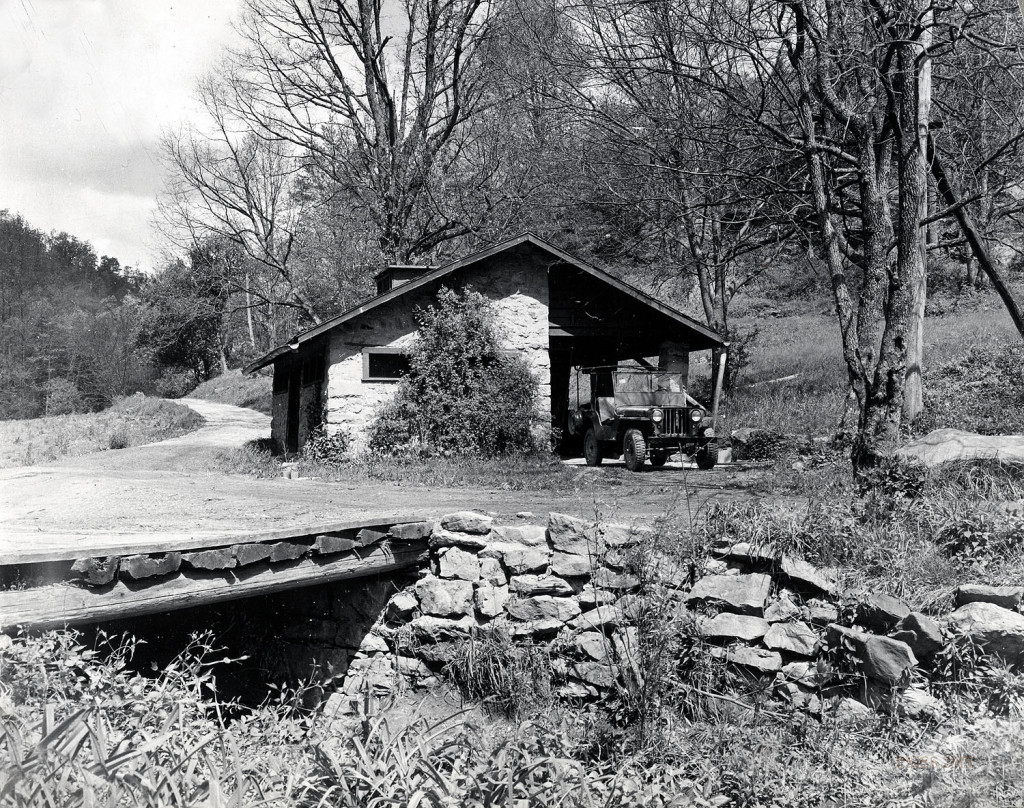
Tool Shed with bridge across Isaac’s Creek in front. Arthur W. Dodd Album. [dodd_A_006_mod.jpg]

Laurel House Interior (?) cobb_alice_045
Since 1920 there have been regular manual training classes for the boys, four periods a week in the shop under Mr. Luigi Zande. From the ranks of beginners making tie-racks and picture frames have come the real cabinet workers who have furnished the whole school with desks, tables, chests chiffoniers, etc. A few of them, like Boone Callahan, Dillard Turner and Harrison Holcolmb, won honors in wood-working at Berea. 1925 was the peak of furniture production; after that the boys were needed for outdoor work.
In 1926 the Playground was nearly doubled in size, by straightening the course of the creek and filling in with sawdust. Student labor added the porch to the new Schoolhouse built the addition to the Infirmary, and the rock wall around the Chapel. Pine Mountain’s later development represents more and more this work of the students, less and less that of hired carpenters and workmen.
AGRICULTURE
Agriculture has also been taught to boys and girls for a part of each year, that there might be the theory of farming as well as its application
The Domestic Science Department worked under difficulties, using the canning kitchen at Laurel House until the completion of the Girl’s Industrial Building in 1924. The cooking classes particularly have profited by this new building. Girls who in the kitchen under Miss Ruth B. Gaines learned how to serve 130 people, had the equally valuable lesson in their cooking classes, of serving a whole meal to a small family.

Joe Bramlett Album – Girl’s Industrial (Plant Center). [bram_-12.jpg]
The weaving classes are mentioned in the section dealing with Fireside Industries.
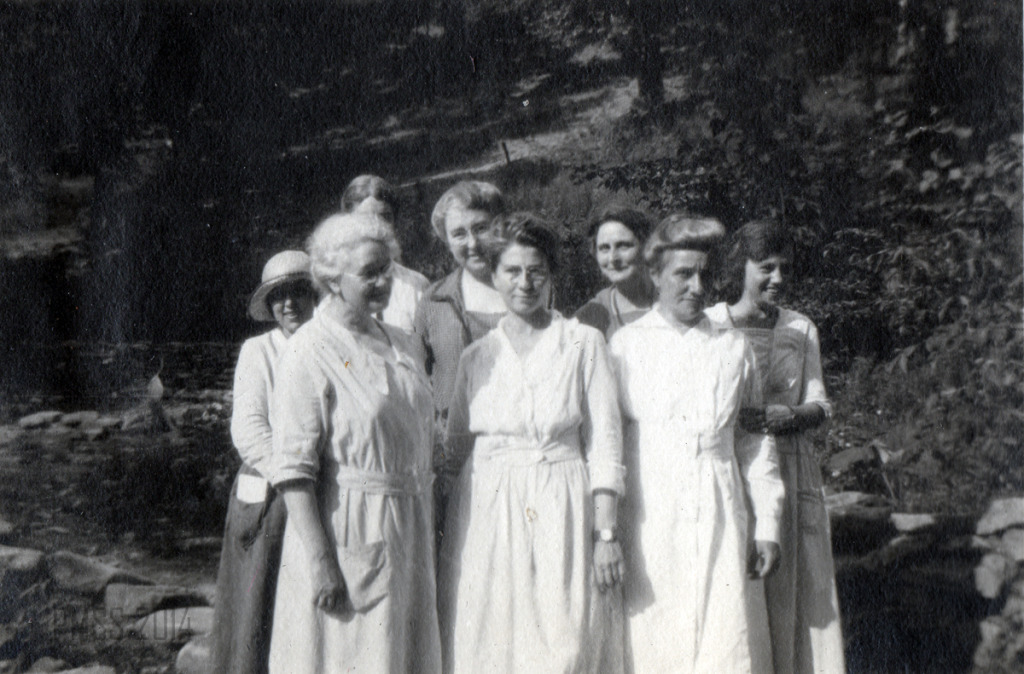
Maya Sudo Album: Harriet Butler with group of nurses and other PMSS medical staff. [sudo_album_024b_mod.jpg]
All just like any other school, perhaps, but unique in a country where these things had never before been taught, and carefully adapted to local needs and conditions, rather than superimposed on our children from some outside community life. Economic necessity has prompted our work. The question of what the children themselves have learned from it all is quite another one We have faith that the fruit of their continual training in the use of materials at hand in thrift industry and thoughtful work, to say nothing of an underlying ideal of beauty that has permeated it all, will increase and multiply.
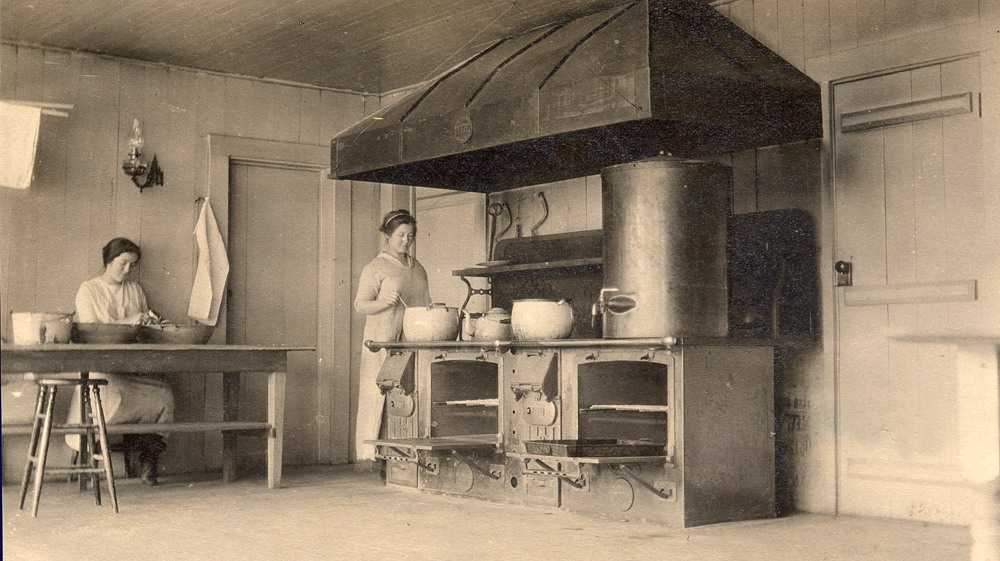
Kitchen in Old Laurel House
SEE:
EVELYN K. WELLS GUIDE TO ADMINISTRATIVE CORRESPONDENCE
EVELYN K. WELLS, GUIDE to EXCERPTS FROM LETTERS HOME 1915-1923
EVELYN K. WELLS 1915 EXCERPTS FROM LETTERS HOME
EVELYN K. WELLS 1915 EXCERPTS FROM LETTERS HOME – Horseback to Hindman
EVELYN K. WELLS 1916 EXCERPTS FROM LETTERS HOME
EVELYN K. WELLS 1917 EXCERPTS FROM LETTERS HOME
EVELYN K. WELLS 1918 EXCERPTS FROM LETTERS HOME
EVELYN K. WELLS 1919 EXCERPTS FROM LETTERS HOME
RECORD OF PINE MOUNTAIN SETTLEMENT SCHOOL 1913-1928 [INDEX] (Early in-depth history of Pine Mountain Settlement School)
2. Introductory
3. Year by Year [Construction, Workers, Gifts, Children, Events, etc.]
10. Academic
11. Health
12. Extension Work
15. Athletics
16. Dramatics
17. Some Contributions to the Outside World
18. Religious Life
19. The Road
22. List of Workers
[22 sections of Pine Mountain Settlement School History gathered by Evelyn K. Wells from 1913 to 1928]
EVELYN K. WELLS PUBLICATIONS
Wells, Evelyn K. The Ballad Tree: A Study of British and American Ballads, Their Folklore, Verse and Music, Together with Sixty Traditional Ballads and Their Tunes. New York: Ronald Press, 1950. Print.
EVELYN K. WELLS “A Little True Blue American,” Over Sea and Land: Our Southern Mountains, November 1920, p. 140.
EVELYN K. WELLS TALKS
EVELYN K. WELLS PMSS Harvard University talk, on Folk Music. July 21, 1955

